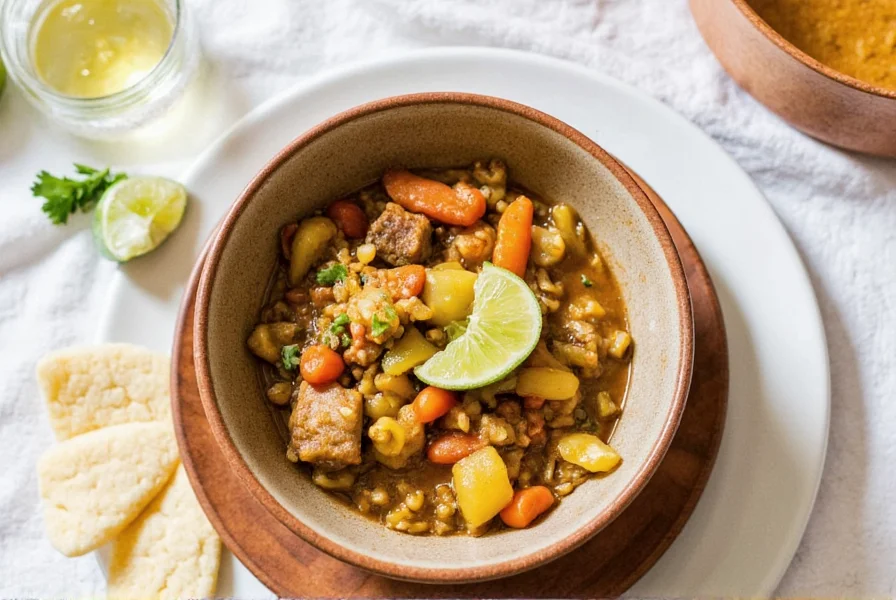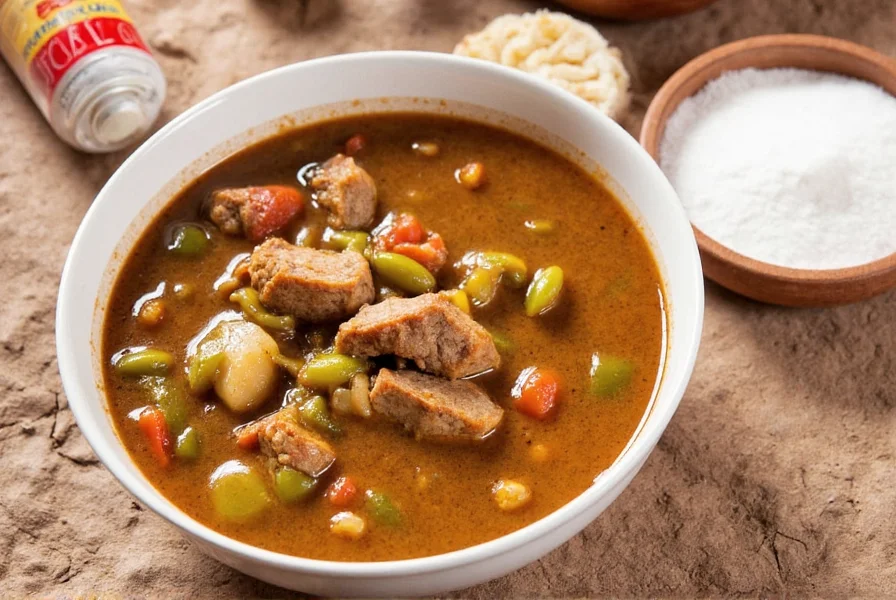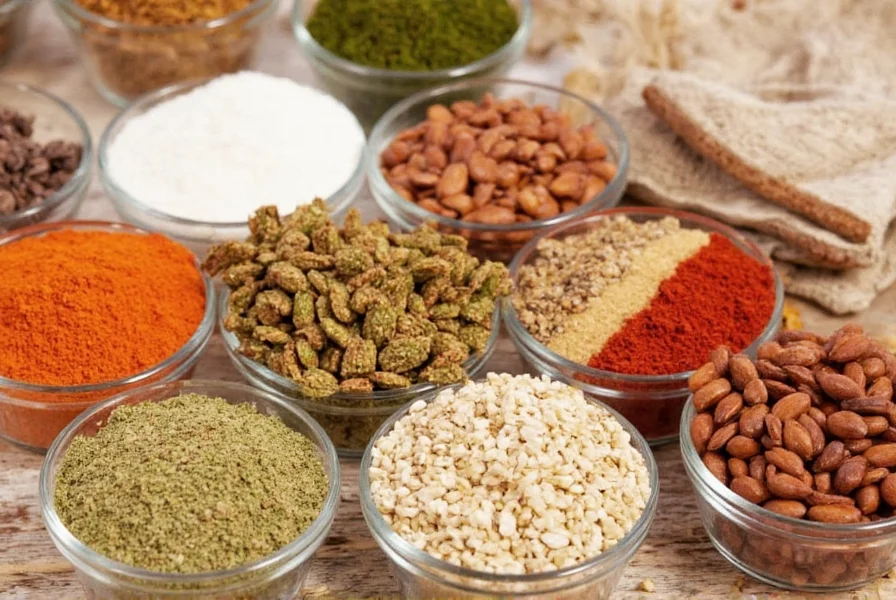Perfect Pork Green Chile Stew Recipe
Craving a rich, flavorful pork green chile stew that rivals your favorite restaurant? Our easy step-by-step recipe delivers tender pork, aromatic spices, and a hearty broth every time. With expert spice storage tips and pro-level hacks, you'll master this comfort food classic.
You'll Need:
- 2 lbs pork shoulder, cubed
- 3 tbsp olive oil
- 1 onion, chopped
- 4 cloves garlic, minced
- 2 large green bell peppers, diced
- 4 fresh Anaheim chiles, chopped
- 2 tbsp tomato paste
- 4 cups chicken stock
- 1 bay leaf
- 1 tsp thyme
- 1 tbsp "Green Fire" spice blend (see below)
- Salt & pepper to taste
Instructions:
- Preheat your Dutch oven over medium-high heat. Add olive oil.
- Brown the pork in batches until golden. Remove and set aside.
- In the same pot, add onions, garlic, and peppers. Sauté until softened (5–7 minutes).
- Add tomato paste and stir until darkened slightly.
- Throw in the spices and let them bloom for 30 seconds.
- Return the pork to the pot, add stock, herbs, and bring to a simmer.
- Cover and cook low and slow for 1.5–2 hours, until pork is fall-apart tender.
- Taste and adjust seasoning before serving.
Serve hot with rice, tortillas, or crusty bread — and don't forget a sprinkle of cilantro and lime wedges!
| Spice | Whole (Years) | Ground (Months) | Best Storage Method |
|---|---|---|---|
| Cumin Seeds | 4–5 | 6–8 | Airtight jar, cool pantry |
| Paprika | - | 6–9 | Air-tight container, fridge recommended |
| Oregano | 3–4 | 6–12 | Dark cupboard, away from heat |
| Ancho Chili Powder | - | 6–10 | Airtight bag inside a jar |
"Green Fire" Stew Spice Blend
- 1 tbsp ground cumin
- 1 tsp smoked paprika
- ½ tsp ancho chili powder
- ½ tsp coriander
- ¼ tsp dried oregano
- ¼ tsp crushed red pepper flakes
Mix well and store in a labeled jar. Use as the base for your next pork green chile stew and watch the compliments roll in.

Smart Spice Storage: Preserve Flavor Like a Pro
The moment you open a jar of spices, the countdown begins. Exposure to heat, light, air, and moisture spells doom for delicate flavor compounds. To keep your spices vibrant and potent, follow these expert-approved storage techniques:
- Airtight containers are a must. Once opened, transfer spices from paper packets or plastic bags to sealed glass jars.
- Cool, dark places preserve flavor best. Keep your spices away from the stove, sink, or sunny windowsills.
- Label everything. Write the date you opened each bottle so you know when it's time to rotate your stash.
Freeze It? Yes! Some Spices Benefit from Cold Storage
Did you know certain ground spices like smoked paprika or dried chipotle powder can be kept in the freezer to prolong their shelf life by months?
This is especially useful if you don't use them often but want that bold flavor ready when inspiration hits (or when guests show up unannounced).
Pro-Level Spice Usage Hacks for Juicy, Spiced-Up Pork
Toast Before You Toss
Adding whole spices like cumin seeds or peppercorns directly to oil before adding meat unlocks their volatile oils and creates deeper, richer layers of flavor.
Heat a small amount of oil in your pot, toss in the seeds, and let them dance until fragrant — just 30 seconds or so. Watch carefully; one second they're perfect, the next they're bitter and burnt.
Bloom Ground Spices for Maximum Flavor Impact
Blooming means sautéing ground spices in oil or fat to release their essential oils. This technique makes a world of difference in dishes like pork green chile stew, where depth of flavor is key.
Tips for Blooming Spices:
- Use medium-low heat to avoid scorching.
- Add spices after onions and garlic have softened slightly.
- Stir constantly — they burn fast!
Buying Guide: Must-Have Tools & Ingredients for the Best Pork Green Chile Stew

| Product | Features | Use Case | Who Needs It |
|---|---|---|---|
| Le Creuset Dutch Oven | Cast iron construction, even heat distribution | Slow cooking, browning meat, simmering stew | Home cooks & professionals alike |
| Vintage Spice Grinder (Manual) | No electricity needed, fresh grinding | Crushing whole spices into powder | Cooking purists & spice lovers |
| Heat-Resistant Silicone Spatula | Heat resistant up to 600°F, non-scratch | Stirring, scraping, folding | All kitchen types |

| Ingredient | Advantages | Flavor Contribution | Occasion |
|---|---|---|---|
| Fresh Anaheim Chiles | Mild heat, bright flavor | Base layer of green chili essence | Weeknight meals, mild spice lovers |
| Dried Guajillo Peppers | Smoky, earthy, complex | Rich depth in broth and sauce | Fancy dinners, gatherings |
| Garlic-infused Oil | Convenience + big flavor | Foundational aroma base | Rushed cooks, beginners |
Frequently Asked Questions About Pork Green Chile Stew
Got questions about making the perfect pork green chile stew? We've got answers to the most common queries from home cooks like you.
What's the difference between green chile and green chili stew?
Green chile refers specifically to the roasted green peppers (usually Hatch, Anaheim, or Poblano) used as the main ingredient. Green chili stew (or chile verde) is the complete dish made with those peppers, pork, and other ingredients. The terms are often used interchangeably, but technically one is an ingredient and the other is the finished dish.
Can I make this stew in a slow cooker or Instant Pot?
Absolutely! For a slow cooker: brown the pork and sauté vegetables as directed, then transfer everything to your slow cooker and cook on low for 6-8 hours. For an Instant Pot: use the sauté function for steps 1-5, then pressure cook on high for 35 minutes with a natural release of 15 minutes.
How can I adjust the heat level of my green chile stew?
Control the heat by: 1) Choosing milder peppers like Anaheim instead of spicier varieties like Jalapeño, 2) Removing seeds and white membranes from peppers (where most capsaicin resides), 3) Adding a touch of honey or sugar to balance heat, 4) Serving with cooling sides like sour cream or avocado.
My stew is too watery. How can I thicken it?
For a thicker stew: 1) Simmer uncovered for 15-20 minutes to reduce liquid, 2) Make a slurry with 1 tbsp cornstarch and 2 tbsp cold water, then stir into simmering stew, 3) Mash some of the cooked potatoes (if using) against the side of the pot, 4) Remove about 1 cup of stew, blend until smooth, then return to pot.
What's the best cut of pork for green chile stew?
Pork shoulder (also called pork butt or Boston butt) is ideal because its marbling and connective tissue break down during slow cooking, creating tender, flavorful meat. Avoid lean cuts like pork loin, which will become dry and tough during the long cooking process.
How long does pork green chile stew keep in the refrigerator?
Properly stored in an airtight container, pork green chile stew will keep for 3-4 days in the refrigerator. The flavors often improve on day two as the spices have more time to meld. For longer storage, freeze portions for up to 3 months.
Can I use canned green chiles instead of fresh?
Yes, canned green chiles (like Hatch or Anaheim) are a convenient alternative. Use 2-3 (4oz) cans, drained, to replace the fresh chiles. For best flavor, look for fire-roasted varieties and consider adding 1/4 tsp onion powder and 1/8 tsp garlic powder to compensate for the flavor depth of fresh roasted peppers.
Final Thoughts: Spice Smart, Cook Brilliant
Whether you're making your first pot of pork green chile stew or your hundredth, never underestimate the power of a properly stored, cleverly used spice arsenal. With the right tools, ingredients, and knowledge, every bite can be bold, balanced, and unforgettable.
So go ahead — dig into that spice rack, unlock its secrets, and turn dinner into something worth writing home about. After all, the only thing better than a warm bowl of stew is one that tastes like it came straight from your dreams… seasoned to perfection.











 浙公网安备
33010002000092号
浙公网安备
33010002000092号 浙B2-20120091-4
浙B2-20120091-4